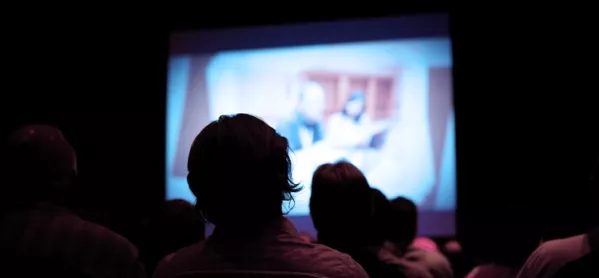- Home
- ‘How to use active film-watching to help raise educational attainment’
‘How to use active film-watching to help raise educational attainment’

“At Bluebell Hill we use film to encourage a love of learning, whether that’s through film club, writing reviews, watching and discussing a film in the classroom to support literacy, or through our family learning, which is bringing adults and children together to have a love of film, and using that to develop family reviews. We’ve seen a real difference. If you can get a child to have a love of learning then everything grows.” Nic Williams, Blue Bell Hill Primary School in Nottingham.
In a world where the moving image is becoming increasingly important there is a growing appetite for using film to support learning, yet still, its merits in education are often sidelined. How, specifically, can this universally accessible and engaging medium be embedded into teaching to promote memorable learning and help raise attainment?
Active film-watching ideas
The key is to use active film-watching in a considered and contextualised manner. Here are a few simple ideas to get you started:
The 3Cs and 3Ss
The 3Cs (colour, camera, character) and the 3Ss, (story, setting, sound) can be used to help students discuss and analyse all the elements. Working with the 3Cs and 3Ss enables students of all ages to make connections between the features of all texts, and develop their decoding, encoding, reading and writing skills. The following activity - one of many using this approach - is for Key Stage 1 and 2 pupils and can be adapted for all age groups. You can view a list of useful 3Cs and 3Ss discussion questions here.
Sound on, vision off
This is an activity where pupils listen to the audio of a clip without watching the visuals. The activity develops pupils active listening skills, encourages deduction and inference from the audio text, helps pupils to analyse sound, consider the purpose and learn encoding skills.
During the activity, learners “hear” sounds when they read and write, which supports deeper analysis and construction of richer texts.
To try “sound on, vision off”, listen to the clip and analyse it using the 3Cs and 3Ss. Having noted down ideas and discussed what pupils have heard and would expect to see, ask them to sketch what the scene might look like and label it to explain their ideas.
Now watch the clip with the images. It’s important to emphasise that the activity is not about correctly guessing what is happening on screen, but is rather a stimulus for creating and exploring ideas. As an extension activity, select a still and ask pupils to use what they see on screen, their skills in “reading” film and their imagination to create an idea for an opening or closing paragraph of a book or an entire storybook chapter.
Practicing different writing styles
After looking at elements using the 3Cs and 3Ss and reading reviews, students of all ages can then write their own reviews. They can also practice different writing styles such as analysis, reviewing and commenting. We often hear of previously reluctant writers whose writing skills and confidence are boosted by writing reviews in class or their school film club.
Film stills can also be used as a stimulus to practice descriptive writing. Or why not ask students to write a formal letter to the British Board of Film Classification arguing, persuading or advising them to alter the certificate for certain adaptations?
Modern foreign languages
Watching and understanding a foreign language film is a perfect way to introduce modern foreign language in context and learn new vocabulary. Simple activities include: choosing 10 words in a film and asking pupils to find synonyms, asking them to describe a character or place practising nouns, adjectives and phrases such as “he, she, it is”, “he, she, it has” or write a review in the language of the film. You could also show an English language film clip and ask classes to write their own subtitles in the relevant language.
History
In history, a well-chosen and contextualised feature film, clip or piece of archive is a fantastically inclusive stimulus for discussion, debate, and inquiry, supporting students through a familiar medium to explore less-familiar and sometimes more challenging sources. Try removing elements of the film text such as the sound, visuals (play the sound only) and editing (work with stills) to encourage engagement, questioning, and interpretation. Encourage caution, interrogation, and a critique of the film, as you would with any other source. Stop and start films, regardless of their length, and build in time to revisit entire short films or particular sequences. Provide opportunities for students to ask questions, as well as being prepared with open questions to lead a discussion.
Bookings are open now for the Into Film Festival 2017, (November 8-24), the world’s biggest, free youth film festival, offering 3,000 free screenings and events for 5-19 year-olds in venues across the UK. For programme details and to book your free tickets visit www.intofilm.org/festival. Tes is a media partner
To set up an Into Film Club for free access to thousands of films and resources visit www.intofilm.org
Want to keep up with the latest education news and opinion? Follow Tes on Twitter and like Tes on Facebook
Keep reading for just £1 per month
You've reached your limit of free articles this month. Subscribe for £1 per month for three months and get:
- Unlimited access to all Tes magazine content
- Exclusive subscriber-only stories
- Award-winning email newsletters
